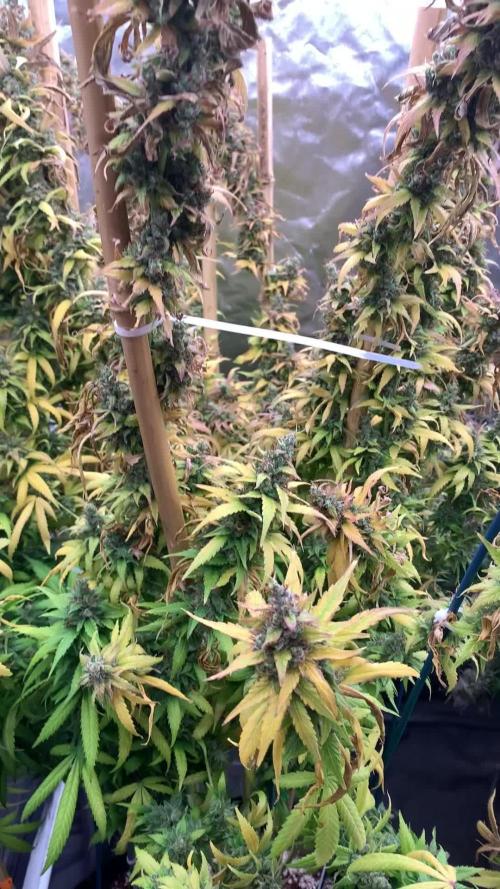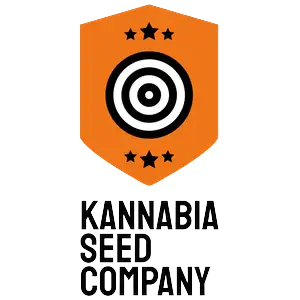The Grow Awards 2026 🏆 





























Likes
46
Share


@PureMedicin
Follow
Been switching between LED and hps as well as mixing the 2 lights. Now im only using hps in the big tent. With the Philips Green power 600w bulb. Running on 400w atm 🙂
Likes
8
Share


@I_Identify_As_A_Dan
Follow
Week 10 for Ztrawberry by Greenhouseseedco,
Her colour is getting so much better! Look at that darker green coming in with the new growth. Still needing her to toughen up a bit before we get into flower.
Likes
25
Share


@Dunk_Junk
Follow
Day 70 - She grew 4cm this week. Her flowers are not as developed as any of her tent mates, looks like she's going to take her time flowering. That's ok. I'm happy to wait 😀
Likes
2
Share


@krst97
Follow
I cut the plant after 48 hours of total darkness. To flush the best, I ran a few dozen liters of water through the jar until the one that came out below was transparent. Although the flowers failed to close, I am satisfied with the result and the smell of the buds inspires a good terpene. To dry well, I moved the grow box to the room with an air conditioner. I'm keeping the temperature around 26-27 degrees and the humidity around 50%.
Likes
6
Share


@GoldenWeedGrower
Follow
Legend
Timestamp: 📅
EC - pH: ⚗️
Temp - Hum: 🌡️
Water: 🌊
Food: 🍗
pH Correction: 💧
Actions: 💼
Thoughts: 🧠
Events: 🚀
Media: 🎬
D: DAY, G: GERMINATION, V: VEGETATIVE, B: BLOOMING, R: RIPENING, D: DRYING, C: CURING
______________
📅 D64/B27 - 18/06/24
⚗️ EC: 1.0 pH: 5.2
🌡️ T: 26°C H: 80%
🌊 FLUSH
🍗
💧
💼 FLUSH first day
🧠
🚀
🎬 1 TL video
______________
📅 D65/B28 - 19/06/24
⚗️ EC: 0.2 pH: 7
🌡️ T: 26°C H: 80%
🌊 FLUSH
🍗
💧
💼 FLUSH second day
🧠
🚀
🎬 1 TL video
______________
📅 D66/B29 - 20/06/24
⚗️ EC: 1 pH: 6.2
🌡️ T: 26°C H: 80%
🌊 15 L
🍗 CalMag - Bloom A-B - Bud Candy - B52 - Overdrive
💧
💼
🧠
🚀
🎬 1 TL video
______________
📅 D67/B30 - 21/06/24
⚗️ EC: 1 pH: 6
🌡️ T: 26°C H: 70%
🌊
🍗
💧
💼
🧠
🚀
🎬 1 TL video
______________
📅 D68/B31 - 22/06/24
⚗️ EC: 1 pH: 6
🌡️ T: 26°C H: 70%
🌊 15 L
🍗 CalMag - Bloom A-B - Bud Candy - B52 - Overdrive
💧
💼
🧠
🚀
🎬 1 TL video
______________
📅 D69/B32 - 23/06/24
⚗️ EC: 1 pH: 6
🌡️ T: 26°C H: 70%
🌊
🍗
💧
💼
🧠
🚀
🎬 1 TL video
______________
📅 D70/B33 - 24/06/24
⚗️ EC: 1 pH: 6
🌡️ T: 26°C H: 70%
🌊
🍗
💧
💼
🧠
🚀
🎬 1 TL video
Likes
2
Share


@JeyGanesha
Follow
Quarta settimana di fioritura.iniziano AD ingrossare e profumare .queste 2 prosecco della korngarden.seeds stanno venendo super
Diventano giorno per giorno sempre più belle e grosse..... forza prosecco kor garden seeds
Likes
10
Share


@iLoveGoodWeed
Follow
The plant has recover won't be the biggest but that is fine with me as it's for RSO/CBD oil
Likes
5
Share


@Happydays58
Follow
03/01 - Day 57
All the girls have their pistils changing colors, buds growing by the day, (B) has has very sweet aromas coming out, & (C) is more earthy and peppery.
Still losing some fan leaves here and there on (A) & (D) from the Cal/Mag & Phosphorus defiance but nothing like 2 weeks ago.
03/05 - Day 61
Enjoying the process and maintaining the environment. Buds on (B), (C), & (D) are starting to get heavy. Maybe some foxtails starting on (C)??
Likes
51
Share


@Cannabeast40
Follow
Description
Autoflowering strain. This is the result of the cross between our most awarded strain, the original Cream Caramel®️ (SWS04), and an exotic purple flowered autoflowering strain, descending from Pakistani Kush ancestors.
This plant looks like an indica strain, with a short internodal distance, numerous small branches in the main stem, compact buds and a big main cola. This strain is a great resin producer.
The aroma of Black Cream Auto®️ (SWS37) is very sweet and fruity, with a background that features outstanding earthy tones inherited from our Cream Caramel®️.
Gender Feminised
Genes 95% Indica / 5% Sativa
Genetics Cream Caramel x Pakistani Kush (automatic)
Harvest 350 - 550 g/m²
Flowering 32 - 42 days
THC 15.0 - 18.0%
CBD 0.7 - 0.8%
Vegetation 21 - 36 days
Ruderalis 3%
Room Type Indoor
Room Type Outdoor
Room Type Greenhouse
Likes
91
Share


@FrontRowAG_BrianG
Follow
WEEK 3 FLOWER DAY 15-21
⭐️💰Nutrients Used💰⭐️
Front Row AG Part A 3.1g per gallon
Front Row AG Part B 2.1g per gallon
Front Row AG Phoszyme .4 g per gallon
Front Row AG Bloom 2.4g per gallon
Front Row AG CleanUp .2g per gallon
All nutrients are mixed direct to reservoir in the order listed. They all dissolve 100% in water. EC 2.2 / PH 5.5
I have a total of 2 phenotypes out of the 5 Super Lemon Haze. I’m shocked they already have so much structure at this early stage. This will be a good run if things progress like they have.
Lights are running 100% about 1400 PPFD. CO2 is set at 1500ppm and this could be a reason for such early development. Temperature is 80-82 degrees, leaf temp 78-80 with 60-65% humidity. I tend to lean toward the high temp/high humidity. I’ve tried managing VPD with lower temps and lower humidity and the quality/yield just isn’t the same.
Things will stay this way til the last 2 weeks of flower.
I’m excited to see what’s to come. The small fan leaves are already spiked with trichromes and the smell is citrusy already!
Thanks for stopping by and see you next week.
Processing
Likes
12
Share


@2Stones1Bird
Follow
Checkout my Instagram @smallbudz to see the Small budget grow setup for indoor use, low watt, low heat, low noise, step by step.
17/02/2020 - Fed her 1.5l of 6.4PH water with 0,2ml of each: Cal Mag (Atami), Grow, Bloom and Max, and 0,5ml of each: Heaven, Alga-mic and Vera, noticed some run off, I use about 1/4 of the nutrient dosage on the chart, to achieve about 100/150PPM (500 scale).
She's starting to smell like smelly feet.
22/02/2020 - Last feed, gave her 1.5l of 6.5PH water with 0,2ml of each: Cal Mag (Atami), Grow, Bloom and Max, and 0,5ml of each: Heaven, Alga-mic and Vera, noticed some run off, I use about 1/4 of the nutrient dosage on the chart, to achieve about 100/150PPM (500 scale).
Likes
6
Share


@BLAZED
Follow
Week 16 (Harvest)
30-1 First day of darkness.
Temperature: 27.9 degrees (lights on) 18.8 degrees (lights off)
Humidity: 65% (highest) 48% (lowest)
31-1 Second day of darkness.
Temperature: 24.5 degrees (lights on) 19.5 degrees (lights off)
Humidity: 65% (highest) 50% (lowest)
1-2 Drying day 1
The Saparot is ready to be harvested!
Before chopping her down, i took a lot of pictures.
I was able to remove most of the soil to see the rootball.
I hang plant as a whole to have a slow dry.
The exhaust fan is on setting 4.
2-2 Drying day 2
Temperature: 19.1 to 17.5 degrees
Humidity: 62% to 57%
I changed the exhaust fan to setting 2 because setting 4 was a bit high in my opinion.
3-2 Drying day 3
Temperature: 19.9 to 18 degrees
Humidity: 62% to 59%
I changed the exhaust fan to setting 1, as someone told me that it was enough air movement for drying.
4-2 Drying day 4
Temperature: 19.8 to 18.5 degrees
Humidity: 62% to 59%
5-2 Drying day 5
Temperature: 19.9 to 18.8 degrees
Humidity: 62% to 59%
Today i checked on the drying plants and the buds are shrinking a bit, they are getting a little bit crispy on the outside aswell,
I hope they wont dry as fast, and i aim for a 12/14 day dry.
Cant find the temps for 6-2 to 2-13.
I do have a video when she was at the half of the dry process.
14-2
Trim day, yay!
She was easy to trim, the buds are nice and dense, and there was not a too high bud/leaf ratio!
She dried for 14 days.
End results:
Dried buds: 81 Grams.
Dried Trim: 18.5 Grams.
I am really surprised how good these genetics are! If you like CBD, i really suggest trying JYM Seeds out!
The Saparot smells very fruity almost like a fruity coctail. The buds are super dense, and very bag appealing.
After some months of curing the sweet fruity smell changed to a more sour smell, but still smells amazing!
To be honest, i cured her a bit poorly, burped too less, and because the buds are so compact she holds moisture better then normal, so she tastes harsh, but thats on me.
I have a pack of JYM's Sour Fruit aswell, so i will for sure try it out again! And my hope is already very high :D
Thanks for following my diary, and feel free to check my others out aswell!
See you at the next one!
Likes
1
Share


@420Cannaking
Follow
Germination great success with 100% rate.
Paper towel moistened with bottled water PH6 in combination with heat mat at 33'C.
Produced all very long healthy tap roots Within 24HOURS.
Blackberry Moonrock Auto by Weedseedsexpress.
Proudly supported by Weedseedsexpress.com
Likes
18
Share


@NMGDOC
Follow
I was flushing all the plants since August 9.
You can see in the videos with de microscope ( I really try my best, but it was pretty difficult) the trichomes looks cloudy and some of them looks amber. Maybe in the videos you can't see it because my hand was really shaky.
August 17: all the plants were in dark.
August 18: i cleaned all the plants, buds, leafs, everything..., spraying water to remove the rests of potasic soap.
Today august 18, during the nigth, i'm going to harvest all the ladies.
In the past 3 days i didn't watering the plants and the smell was stronger.
August 19:
Before dry
-Critical Kush: 150g
-Red dwarf: 60g
-Syrup (2 plants): 270g
-Lemon (4 plants): 570g
Likes
12
Share


@thonhash
Follow
Esta semana añadimos el otro led ts 1000 para seguir regulando (añadiendo más potencia lumínica)
Agregamos paja,para una mejor retención de la humedad y no se seque primero la parte superficial de la tierra (uno de nuestros mayores errores al querer calcular si todo el cepellon está seco o sigue teniendo algo de humedad,por consecuencia,al volver a regar ,sigue con ese pequeño exceso de humedad) ,con el objetivo de conseguir una mejor vida en nuestro suelo ,con todos los nutrientes orgánicos y la clave,enzynabis,crearemos una buena simbiosis,y lo más importante,natural.





























